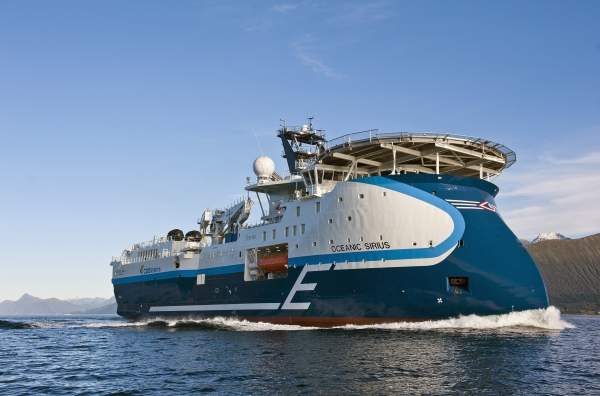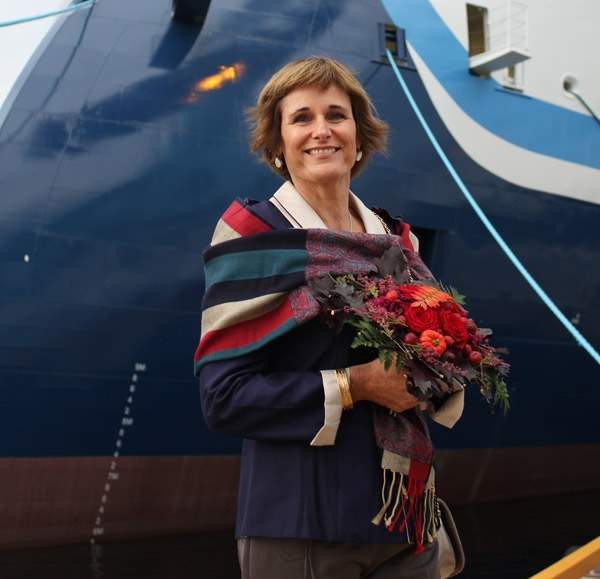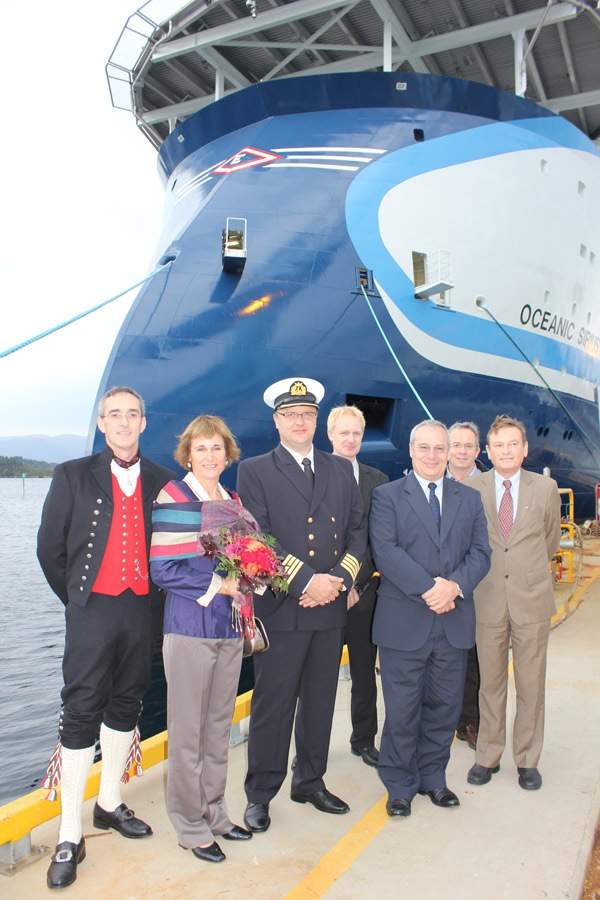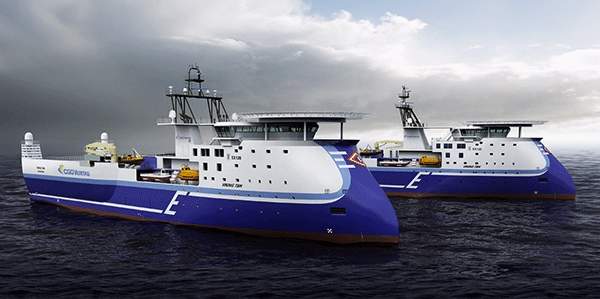On her first project, Oceanic Sirius has been deployed to acquire 3D BroadSeis data on the Avaldsnes field, one of the largest oil discoveries in Norway. The acquired data will help to improve resolution and imaging of the field. BroadSeis is a broadband marine technology owned by CGGVeritas.
Construction of the Norwegian seismographic research vessel
Ulstein Verft was contracted by Eidesvik in July 2007 to construct two advanced seismic research vessels of the SX120 type. The value of the contract was NOK1.3bn (approx. 223.5m). The first vessel, Oceanic Vega, was delivered in July 2010.
The keel for the second seismic research vessel, Oceanic Sirius, was laid in March 2009. She was launched in September 2009 and was delivered in October 2011 after an official naming ceremony held in Ulsteinvik, Norway.
The hull of the vessel was manufactured by Maritim Shipyard, a shipbuilding and ship-repair company based in Gdansk, Poland.
Design and features of the Oceanic Sirius
The design of Oceanic Sirius is based on the SX120 model designed and developed by Ulstein Group’s Ulstein Design & Solution. The SX120-based vessels are designed to meet the requirements of international seismic research industry.
The vessel is incorporated with Ulstein’s X-Bow hull design which is based on an inverted bow concept. This unique hull line of the vessel offers greater transit speed and ensures calm navigation and operations, even in rough weather and marine conditions. The inverted bow shape helps to achieve excellent fuel efficiency by reducing hydrodynamic drag.
The vessel delivers a dynamic towing force of 140t during seismic operations and can be deployed to acquire 3D, 4D or higher resolution data. She is configured with 20 streamer winches, each of which can spool 9km of streamers.
The vessel carries DNV’s redundant propulsion and clean design notations. Redundant propulsion notation ensures the propulsion and steering systems remain operational after any failure in parts of the system, while clean design notation intends to control and limit the ship’s operational emissions and discharges.
Green features of the vessel include diesel electric propulsion system, sludge, garbage and sewage handling systems. In order to prevent the movement of marine organisms with ballast water, the vessel is fitted out with a ballast water treatment system.
Technical specifications and vessel capacities
Oceanic Sirius has an overall length of 106.5m, while length between perpendiculars is 99.3m. Maximum moulded breadth is 28m and moulded breadth at main deck is 24m. Depth to main deck, maximum draught and design draught are 10m, 8m and 7m respectively.
Deadweight of the vessel at 8m draught is 6,013t. International gross tonnage and net tonnage are 12,550t and 3,765t respectively. The bollard pull of the vessel is approximately 190t and can cruise at a maximum speed of 18.2kt.
Tank capacity for fuel oil is 3,225m3, fresh water is 565m3, ballast water is 4,690m3 and lubricating oil is 156m3.
Accommodation facilities onboard the advanced Oceanic Sirius vessel
The vessel can provide permanent accommodation for 70 people. There are six crew and six client state cabins with dayrooms and bedrooms. There are nine two-bed cabins and 40 one-bed cabins.
Facilities onboard the vessel include a separate hospital, galley, dish wash room, a mess that can seat 49 people, two day rooms, smokers’ day room, games room, conference rooms and offices, wardrobe, gymnasium, sauna, laundry handling room, laundries, drying room and a small swimming pool.
Oceanic Sirius is outfitted with diesel electric power and propulsion plant consisting of six main generators, two electric propulsion motors, two main controllable pitch propellers and an emergency generator.
Of the six main generator engines, four are of 3,745ekW capacity each and two are of 1,870ekW each.
For smooth manoeuvring, the vessel is fitted with two side thrusters: one tunnel thruster of 1,200kW is fitted forward and the other one of 830kW is fitted aft of the vessel.
Deck cranes and winches on the Norwegian ship
Two knuckle jib cranes on the ship are designed for ship-to-ship operations and can be operated with the help of a radio remote control.
Each of the two cranes has a load lifting capacity of 15t at 18m outreach. A third knuckle jib crane is also provided. It has a safe working load of 10t at 20m outreach.
Deck winches include two combined windlass / mooring winches, one double mooring winch, two capstans and four rope storage winches.





